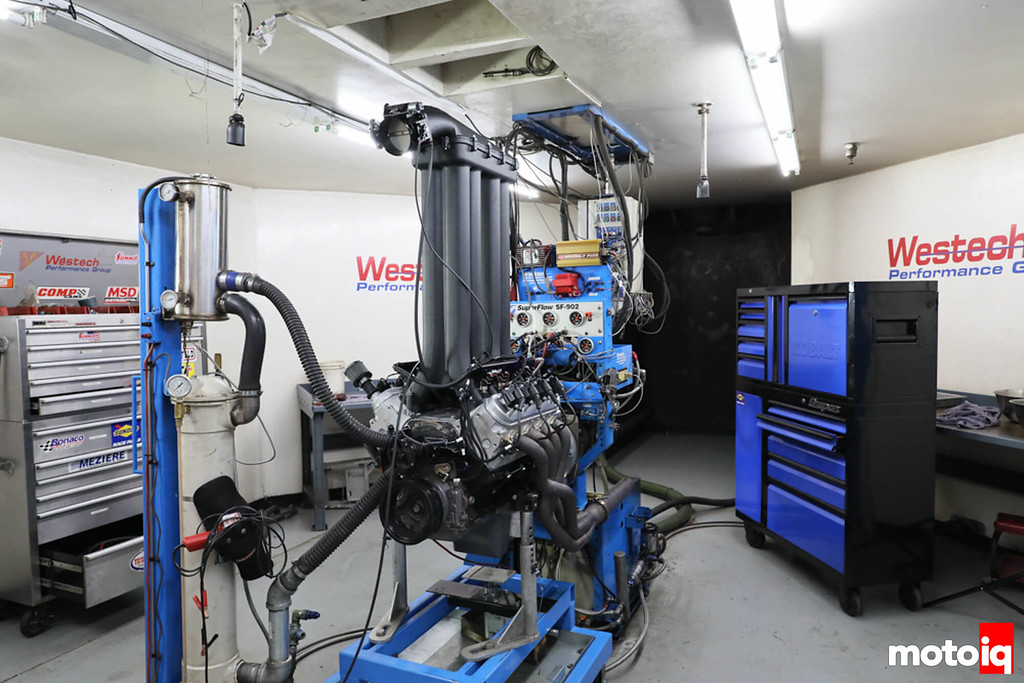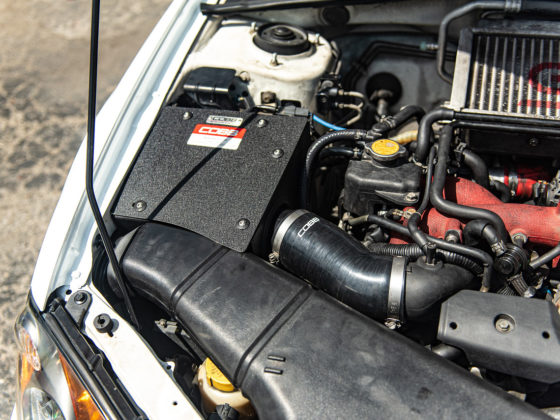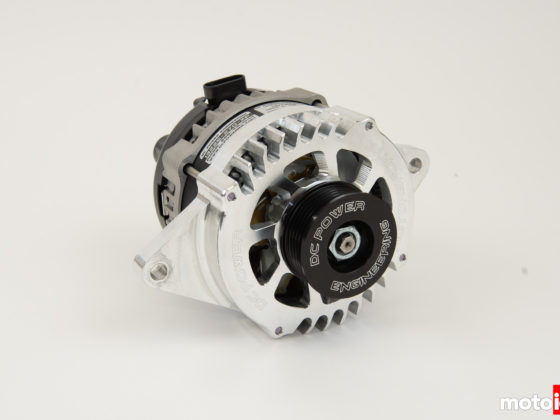
With the Hi-Ram bolted in place, Westech’s Steve Brulé fired the engine and began the test with a few pulls to put some heat in the coolant and engine oil, then Brulé yanked back on the throttle lever and let the engine sing against the dyno brake. The result was a very respectable 536 horsepower at 6,900rpm and 457 lb-ft of torque at 5,000rpm. Not bad for what is essentially a budget engine build. The combo worked great with 380 lb-ft on tap as early as 3,000 rpm and an ample power curve that was almost flat from 6,400rpm to 7,000rpm. This was a powerplant that would be at home in any hot rod or racecar.

With the baseline established, it was time to see how adding gobs of runner length would transform the power and torque curves. There was speculation galore, and a giddiness percolating the dyno cell. Even Brulé, who’s tested about every intake manifold combo under the sun, hadn’t yet tested anything this… weird.
The Sky-Ram was bolted in place on the engine, needing only a lengthened harness connection to the throttle position sensor (TPS) since an idle air control (IAC) wasn’t necessary on the dyno. With the base of the intake modeled after a Hi-Ram, it is installed in the same manner, requiring no specialty hardware. The front-feed plenum up top is a Holley stocking part (300-246) and the same design used on the Hi-Ram. It was a true, apples-to-apples test.
It was all smiles when the Sky-Ram equipped LS barked to life. It ran, and that checked one box off the list. Brulé put the engine through a series of partial dyno pulls, dialing in the fuel mixture in the Holley HP ECU. The Sky-Ram was truly a different animal and warranted significant changes in the fuel tuneup over the previous Hi-Ram test. Once satisfied the engine had the fuel it demanded, Brulé queued up the dyno one more time. The moment of truth had arrived.

The Sky-Ram-equipped LS hunkered down against the dyno as Brulé put it through its paces. An audibly different tone bellowed from the cell as the engine churned out 510.8 lb-ft of torque at a mere 3,700rpm, a 53.8 lb-ft improvement in peak torque over the Hi-Ram and 108 lb-ft improvement at the same, 3,700rpm! Power climbed rapidly, boasting a significant 70 horsepower over the Hi-Ram at 3,600rpm. Soon, however, the Sky-Ram’s early horsepower lead trailed off and it began to show its hand, the inevitable downside to the ultra-long-runner design.




2 comments
I installed the Crawford Billet Power Blocks on my FR-S and noticed a definite increase in low-end torque. I mean, they are only about 1.5″ high so the boost is somewhat minimal, but at highway speed when you need a little push, you can tell the difference. SCIENCE!
we tested those!
https://motoiq.com/tested-crawford-performance-fr-s-brz-power-blocks-intake-manifold-spacers/